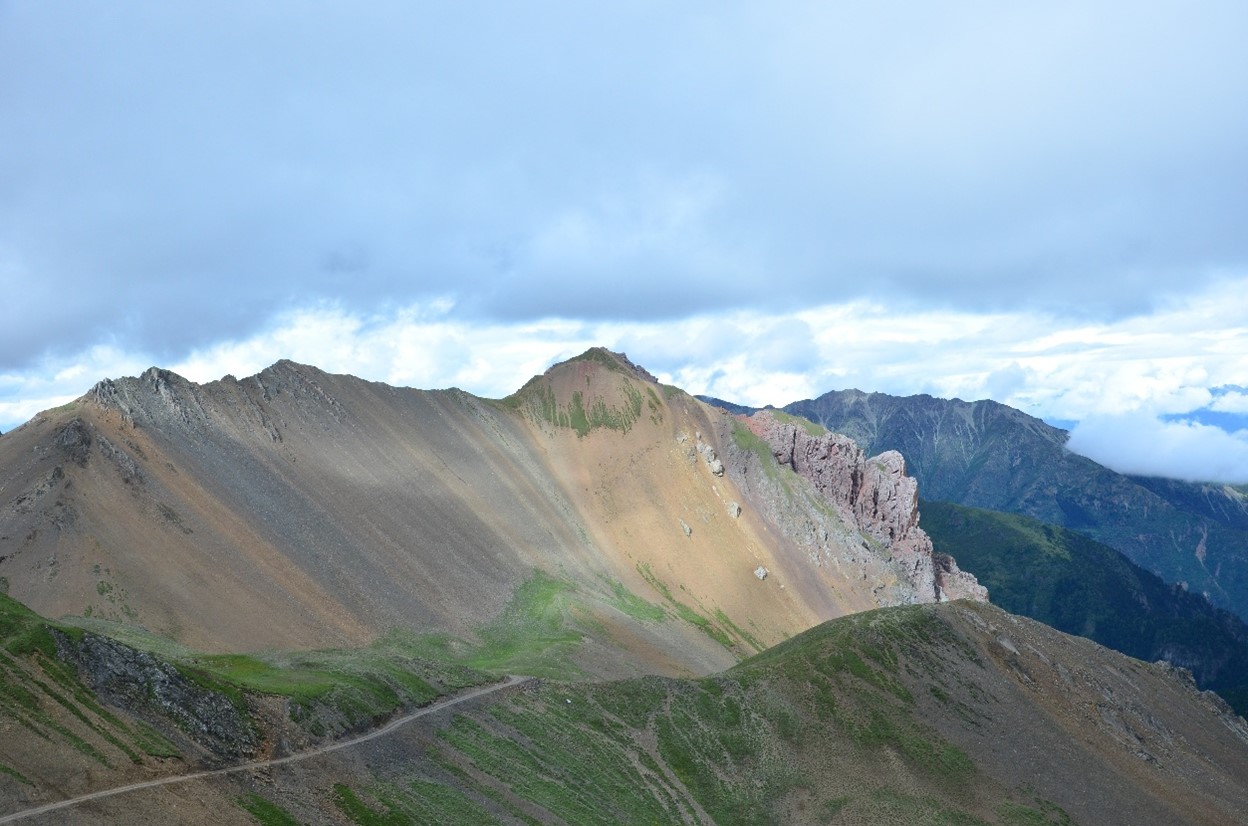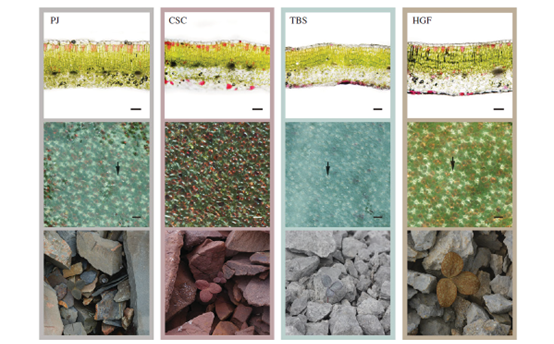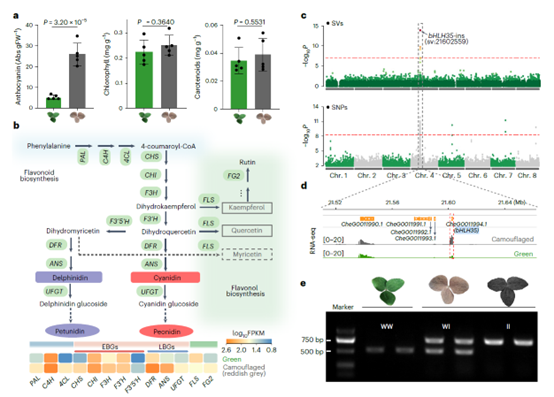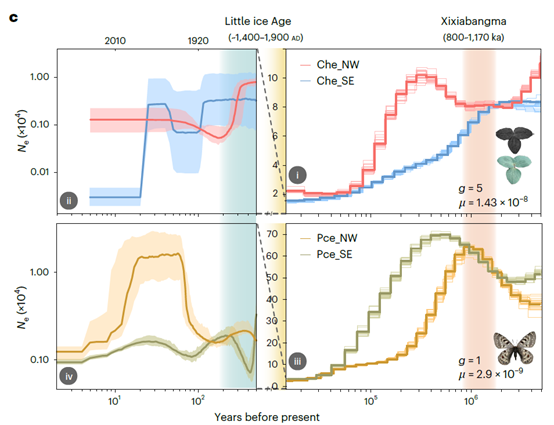
Camouflage is a common defensive strategy among animals. By modifying their coloration and patterning, animals evade predators or ambush prey. Notably, over 40 alpine plant species in the Qinghai-Tibet Plateau and adjacent regions exhibit typical camouflage coloration.
A collaborative research team from the Kunming Institute of Botany of the Chinese Academy of Sciences and Lanzhou University has uncovered new genetic and ecological mechanisms underlying plant camouflage. Their findings, published in Nature Ecology & Evolution, reveal how herbivore pressure drives the evolution of leaf coloration in alpine Corydalis species.
In high-altitude scree slopes (above 4,000 m) of Southwestern China, freeze-thaw cycles fragment rock into shifting gravel. Despite extreme conditions, these subnival zones host specialized flora and fauna. Some Corydalis species exhibit leaf colors that closely match their rocky substrate, rendering them nearly invisible—earning them the title of “masters of camouflage.”
These plants serve as critical hosts for Parnassius butterflies, whose larvae feed exclusively on Corydalis. Female butterflies rely on visual cues to locate host plants for oviposition, suggesting that herbivory pressure has driven the evolution of camouflage in these plants.
Previous studies demonstrated that camouflage enhances survival without compromising photosynthesis. Leaf color varies across populations, matching local rock backgrounds. The camouflaged leaves of Corydalis accumulate high levels of anthocyanins, which directly contribute to their cryptic phenotype. However, the genetic basis of this camouflage coloration remained unclear.
In this study, the researchers leveraged leaf-color dimorphism (where camouflaged and green morphs coexist) and population-level variation to reveal the genetic mechanism underlying camouflage leaf coloration in Corydalis hemidicentra.
By assembling high-quality genomes of two leaf color morphs (camouflage and green) and integrating transcriptomic and metabolomic analyses, the researchers discovered how the specific expression of structural genes in the anthocyanin biosynthesis pathway and metabolite accumulation lead to camouflaged leaves.
Using high-quality SV and SNP datasets including 157 plant individuals from six populations, a genome-wide association study (GWAS) identified that a 254-bp transposon insertion in bHLH35 gene (bHLH35-ins) on chromosome four strongly correlated with leaf camouflage.
The insertion acts as an enhancer of the bHLH35 gene, increasing transcriptional activity and expression level of bHLH35. As a transcription factor regulating anthocyanin synthesis, elevated bHLH35 upregulates downstream anthocyanin structural genes and promotes anthocyanin accumulation in leaves, giving leaves a rock-like grey color.
Furthermore, the researchers conducted field experiments using decoy leaves made by three-dimensional printing to assess the defensive efficacy of camouflaged plants against Parnassius butterflies. Results showed that butterflies predominantly visited and oviposited near green plants. In natural settings, camouflaged plants suffered less Parnassius herbivory and had higher fruit sets.
Analyses of plant and butterfly effective population sizes and climate data over the past 500 years revealed a “mirror fluctuation” pattern between plant and butterfly populations: under recent warm periods, green plant populations declined sharply while butterfly populations remained stable; conversely, camouflaged plant populations stayed steady, while populations of Parnassius butterflies have refused.
By integrating sensory ecology, molecular biology, and evolutionary biology, the researchers elucidated the genetic and ecological adaptive mechanisms underlying the camouflaged coloration of Corydalis hemidicentra. This study offers new insights into the survival strategies of alpine plants.

Alpine scree slopes of the Qinghai-Tibetan Plateau (Image by KIB)

The pigment basis of leaf color differentiation in Corydalis hemidicentra (Image by KIB)

Genetic mechanism of camouflaged leaf coloration in Corydalis hemidicentra (Image by KIB)

Field experiment on Parnassius ovipositing (using decoy leaves), and statistics of leaf herbivory and fruit set for plants (Image by KIB)

Demography of plant and butterfly effective population sizes (Image by KIB)

86-10-68597521 (day)
86-10-68597289 (night)

52 Sanlihe Rd., Xicheng District,
Beijing, China (100864)

